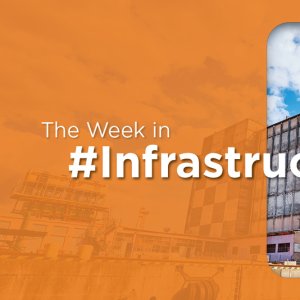Bajio Northern Region Offer Opportunities for Rail Infrastructure

STORY INLINE POST
Mexico’s first locomotive blew a steam cloud in Mexico City in 1873. Since that moment, the economic development of the country has been closely linked to the efficient transportation means that railways provide. The future seems more than promising, says José Zozaya, President of Kansas City Southern de México (KCSM).
“In railway freight, the greater the volume, the higher the speed and the longer the distance, the greater the efficiency of train transportation,” he says. This makes proximity to railways a must for cross-border trade and export-oriented industries such as automotive. This means the Bajio region and the north of Mexico offer the most opportunities for construction and improvement of railroad infrastructure in the form of city-rail beltways, rail border crossings and switchyards. “Brownsville-Matamoros and Laredo-Nuevo Laredo require better rail infrastructure so that trains can cross the border faster,” Zozaya says. “A major rail bypass in Celaya is also needed to make railway transportation more efficient and safer.”
KCSM is exploiting opportunities in these areas. The company contributes to making the crossing of goods by railway in the Nuevo Laredo-Laredo region swifter and safer. “KCSM is building a double-track that stretches from the Sanchez Switchyard to the Nuevo Laredo International Bridge to create a safe corridor,” says Zozaya. He explains that KCSM is improving the capacity of this bridge by hiring train crews with dual nationalities. “This eliminates the need to stop convoys in the middle of the international bridge for crew changes,” he says. In Celaya in the Bajio region, KCSM identified the need for a major rail bypass, a project in which it would like to participate. “This city experiences a great deal of railway traffic because the local automotive industry requires high numbers of trains and because both Ferromex and KCSM operate there,” Zozaya says. The problem with high levels of rail traffic in the area is that they force trains to move slowly, putting convoys at risk of being vandalized and reducing their efficiency.
In Mexico, railway-transported freight accounts for 27 percent of the total goods transported and, according to Zozaya, KCSM is responsible for moving 40 percent of this. Of this 40 percent, 17 percent belongs to the automotive industry and the rest to grains, fuels and other products. Zozaya says that automotive companies arriving in Mexico establish their plants as close as possible to the largest railway networks. “This is one of the reasons why the automotive industry has bloomed in the Bajio region, San Luis Potosi and Nuevo Leon,” he says. Railways enable companies to transport light and heavy vehicles and auto parts in a cost-efficient way over long distances. In the specific case of Celaya, Zozaya says that OEMs and their suppliers put pressure on the railway network to expand but that KCSM still has the train capacity to support the growth of the automotive manufacturing plants. “We work together with these companies and jointly prepare for their projected transportation needs,” he says. “Locomotives are locomotives, whether they belong to KCSM or its competitors, but we transport merchandise at lower costs, with high delivery efficiency and security.”
As production volumes in the automotive and agriculture industries grow, Zozaya is confident that the use of railway freight in those industries will grow as well. He believes this will detonate growth and enable railway companies to move up to 35 percent of the total freight transported nationally in the long term. In the meantime, he says KCSM will continue investing in Mexico as the company has committed US$156 million for 2017 and has agreed a joint venture with Watco and WTC Industrial for a fuel-storage facility in San Luis Potosi. But, as he puts it, “Efficient logistics infrastructure is much more than creating and maintaining the physical infrastructure.” He says more regulations are needed to enable logistics companies to transport goods swiftly.























